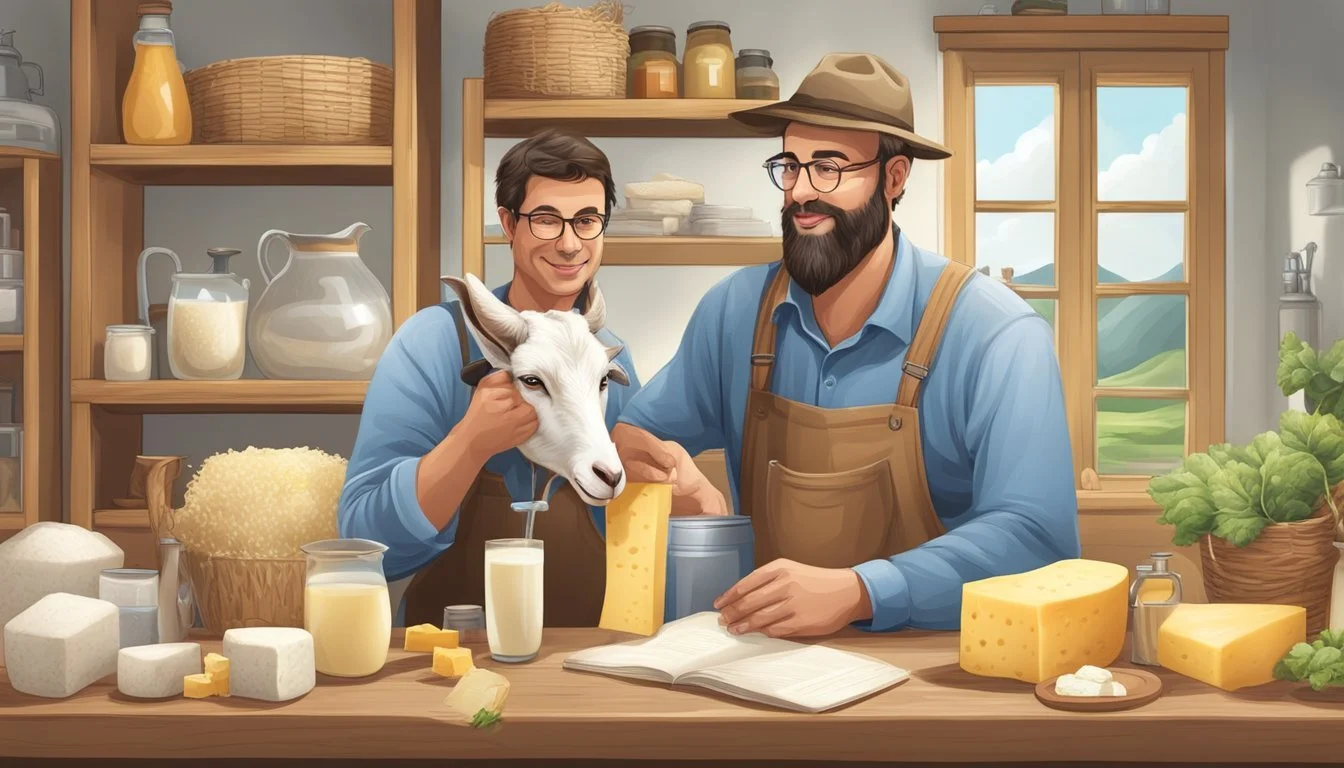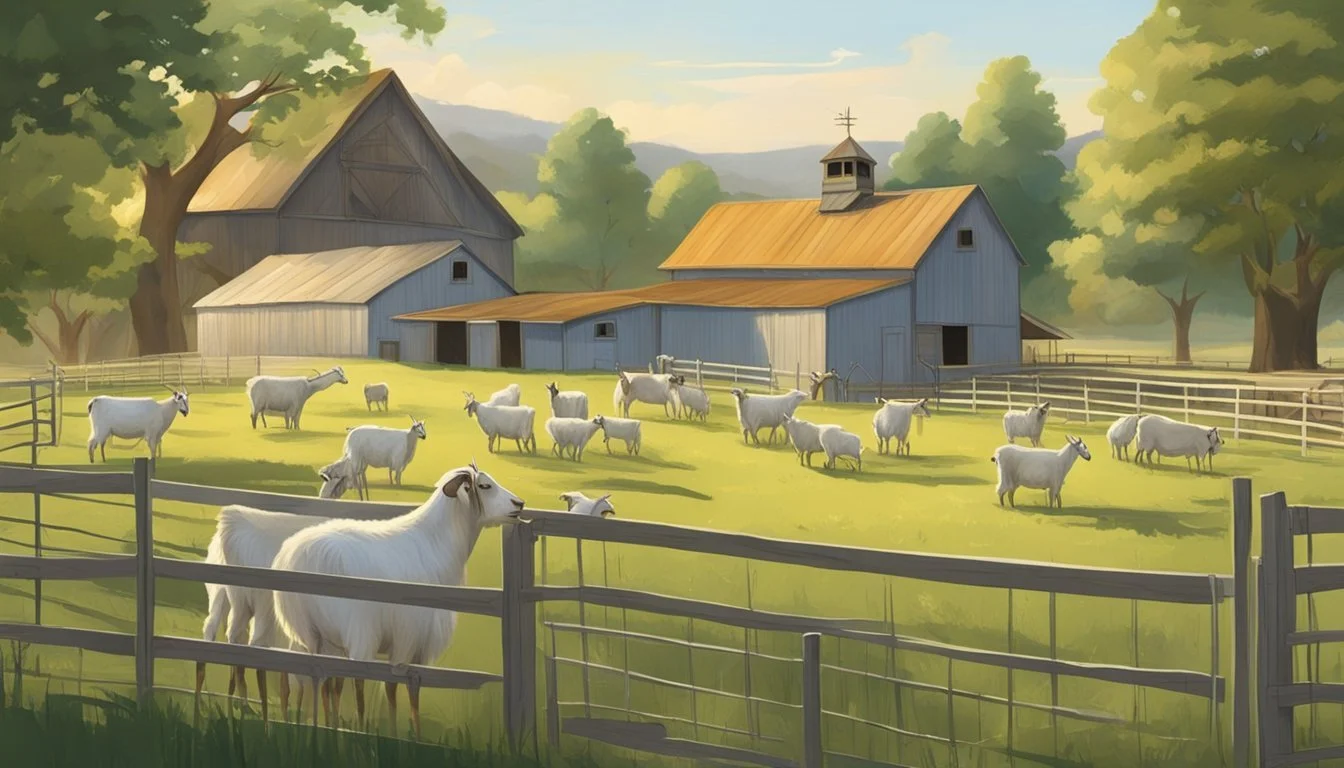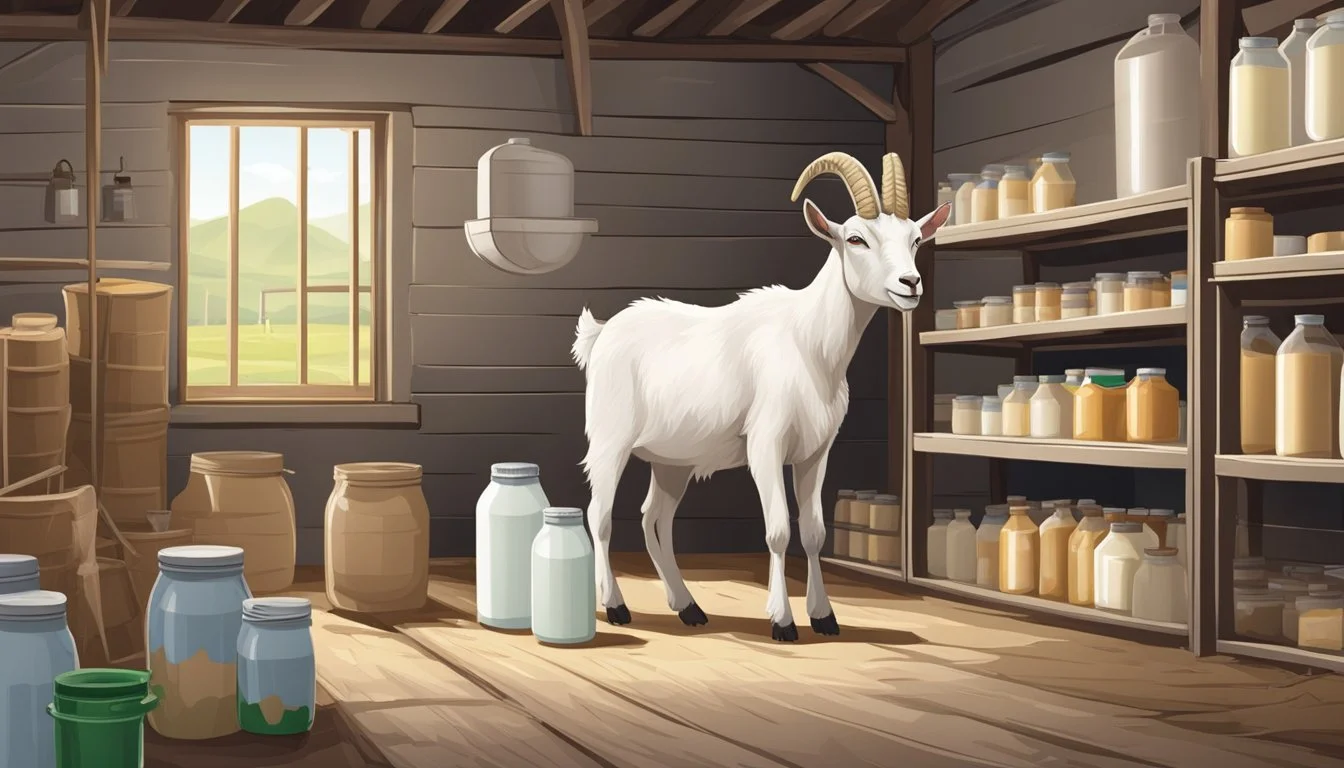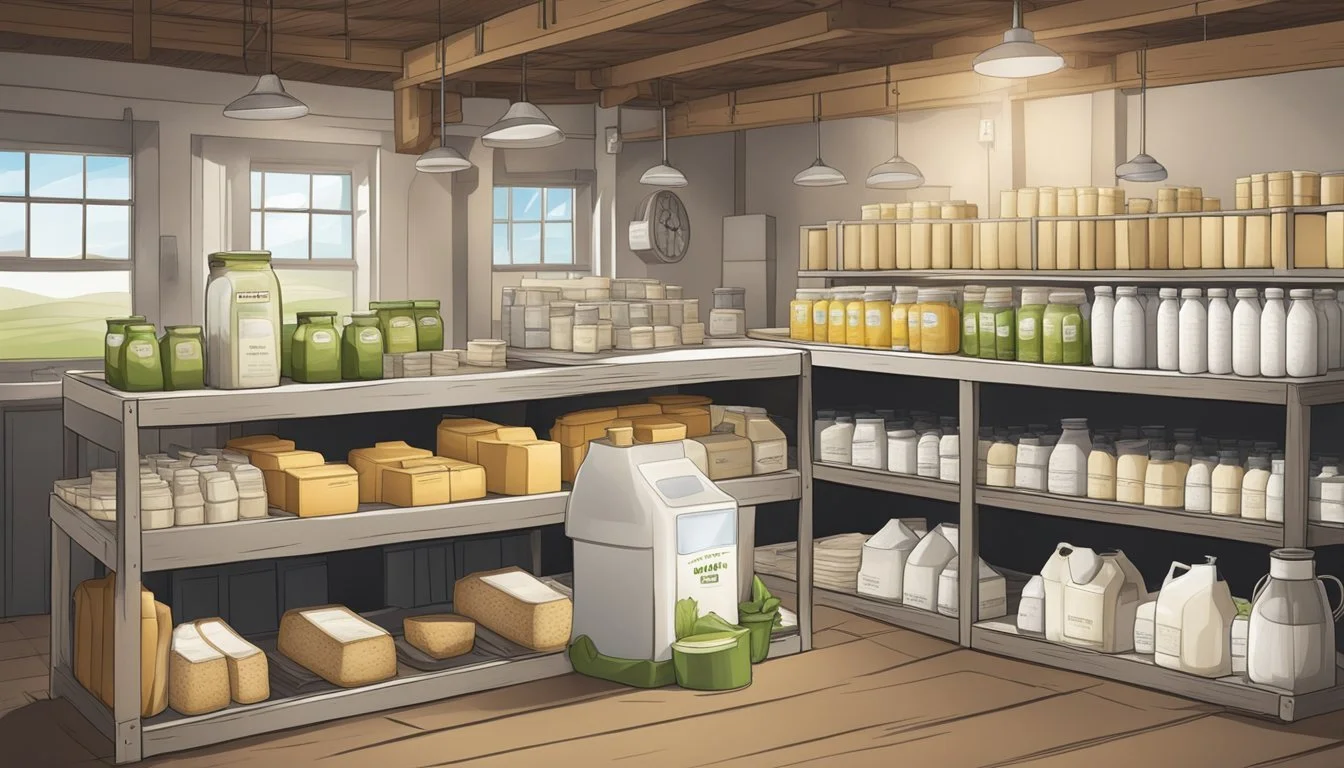The Legalities of Selling Goat Milk and Products
Key Regulations and Compliance Tips
Engaging in the sale of goat milk and dairy products presents a unique set of legal challenges that producers must navigate. Farmers and small-scale processors need to have a comprehensive understanding of the regulations governing dairy licensing, food law, and the distribution of these goods. The intricacies of these laws are crucial for ensuring both the safety of consumers and the legal operation of businesses dealing in goat milk.
In the United States, the legal landscape for selling goat milk is complex and varies significantly from state to state. Producers must be aware that while selling raw goat milk may be permitted in certain jurisdictions, most states require that milk intended for commercial sales be pasteurized and adhere to the grading standards. For example, obtaining a Grade "A" pasteurization license is mandatory in a majority of states for commercial sales, and adhering to this standard ensures that producers can distribute their products more widely.
Additionally, selling goat milk and products often requires compliance with specific labeling regulations, health department certifications, and adherence to food safety practices. It's essential for producers to acquire the necessary licenses and to understand the local and federal requirements to legally sell their dairy goat products. This includes not only the sale of milk but also value-added products such as cheese, yogurt, and ice cream, which can diversify a farm’s offerings and increase revenue while serving community needs for quality, locally-produced food.
Understanding Dairy Goat Farming
Dairy goat farming requires a solid grasp of the best breeds for milk production and mastery of the essentials in goat care.
Goat Breeds for Dairy Production
When selecting goats for dairy production, the choice of breed is crucial. The Alpine and Saanen breeds are renowned for their high milk yield, while the Nigerian Dwarf is prized for its rich, high-butterfat milk suitable for cheese-making. The Nubian is often favored for its milk's flavor and butterfat content. Other dairy breeds include the Oberhasli, Toggenburg, and LaMancha, each with unique milk production traits and adaptability to varied environments.
Basics of Raising Dairy Goats
Raising goats requires a comprehensive understanding of care, feeding, and housing. Goats need secure fencing to prevent escape and protect them from predators. Adequate pasture allows for grazing, a vital component of their diet. Dairy goats thrive on a balanced diet that includes forages, grains, and supplements, ensuring high milk production and health. Shelter is essential: a well-ventilated but draft-free space protects them from weather extremes. Regular health checks and preventive care such as vaccinations and deworming are integral to maintaining a healthy herd.
Licensing and Regulations
Entering the business of selling goat milk requires a clear understanding of various licenses and adherence to strict regulations. Producers must navigate local and federal requirements designed to safeguard public health and ensure product quality.
Navigating Dairy Licenses
To legally sell goat milk or products, one must secure the appropriate licensure, which typically involves coordination with the state's Department of Agriculture. A Grade A license is necessary for producers planning to distribute milk for consumption, while a Grade B license may apply to those selling milk for manufactured products. These licensing processes ensure the dairy's capability to comply with health standards, such as regular inspection and milk testing protocols. Detailed information regarding these processes can be found through resources like An Introduction to Dairy Licensing and Food Law.
Complying with Pasteurized Milk Ordinance
Compliance with the Pasteurized Milk Ordinance (PMO) is another critical aspect. The PMO, established by the Food and Drug Administration (FDA), dictates the standards and regulatory requirements for the production of Grade "A" pasteurized milk. These regulations are in place to control potential health hazards and involve rigorous pasteurization protocols to inactivate pathogenic bacteria. Producers must closely follow these standards, as failing to do so can lead to serious health risks and legal consequences.
Milk Production and Processing
The successful sale of goat milk and products hinges on meticulous milk production and processing stages. These stages must meet stringent standards for hygiene and quality control.
Milking Procedures and Hygiene
Milking procedures are fundamental to ensuring the quality of goat milk. It is imperative that milking is performed in a sanitized environment to prevent contamination. Proper hygiene includes cleaning the goat's udders before milking and sterilizing all equipment used in the milking process. Milkers should also wash their hands thoroughly and wear clean clothing.
Handling and Storing Milk Products
Immediately after milking, milk must be cooled to around 4°C (39.2°F) to maintain its freshness and prevent bacterial growth. Milk should be stored in clean, stainless steel containers to preserve quality. Both raw milk and pasteurized milk need to be handled with care; transportation to processing facilities or markets requires insulated containers or refrigerated vehicles to keep milk at an appropriate temperature.
On-Farm Processing of Goat Milk
For farmers who opt for on-farm processing, understanding and investing in the necessary processing equipment is crucial. Pasteurization is a commonly used method to make milk safe for consumption by eliminating harmful bacteria. On-farm processing may also include making cheese, yogurt, and other dairy products, which requires additional specialized equipment. Compliance with local and state regulations governs the processing and ensures safety and quality of the final products.
Marketing and Sales Strategies
Successfully marketing and selling goat milk and its products hinge upon the establishment of a strong brand identity and the effective use of various sales channels. These strategies are crucial for small businesses in the goat milk market to establish their presence and reach customers effectively.
Creating a Strong Brand Identity
Developing a strong brand identity is vital for small businesses trying to stand out in the marketplace. This begins with professional branding, which includes a well-designed logo and consistent use of colors and fonts that convey the business's values. A strong website serves as the digital storefront, featuring high-quality photos of products and the farm to visually engage customers. Additionally, integrating customer testimonials can enhance credibility and foster trust with potential customers.
Exploring Various Sales Channels
Diversification of sales channels is a key element for expanding market reach. Small businesses can increase visibility by selling at local farmers markets, which provides direct contact with consumers and immediate feedback on products. Engaging in community supported agriculture (CSA) programs can build a committed customer base and ensure a steady market. For wider distribution, partnering with local distributors can help to get products into stores and restaurants. Online sales through the farm's website can also attract a larger, potentially global customer base, making the brand accessible beyond local markets.
Utilizing a variety of sales channels allows producers to tap into different segments of the market and can lead to increased sales and stronger relationships with consumers.
Goat Milk Products and Profitability
In the realm of goat dairy, the intersection of diversified dairy products and their impact on profitability is paramount for a sustainable and profitable production system.
Diversification of Dairy Products
Diversifying the range of products derived from goat milk is a key strategy for maximizing the profitability of a goat dairy operation. Cheese and yogurt are popular dairy products that command a premium in the market due to their artisanal value and healthful properties. The expansion into specialty items such as gourmet ice cream, butter, and even non-edible products like goat milk soap can open additional revenue streams. These items appeal to consumers looking for natural and locally-produced goods, which allows producers to potentially generate a higher profit margin.
Costs and Revenue in Goat Dairy
The economic viability of goat dairy products hinges on the careful management of costs and revenue. Expenses encompass a wide array; feed, housing, healthcare for the goats, and processing costs, including equipment and regulatory compliance for dairy production. Producers must balance these expenditures against the revenue generated from sales of dairy products. Economies of scale can be achieved with a larger herd and more efficient production processes, subsequently reducing costs per unit and enhancing profitability. The sale of high-quality cheese, yogurt, and other products often generates a substantial share of the revenue in goat dairies, underscoring the importance of maintaining product quality and marketability.
Supplementary Goat Farming Activities
In addition to dairy production, goat farming encompasses a range of activities that can optimize the use and health of goats, as well as contribute to the sustainability of the farm.
Roles of Goats Beyond Milk
Goats serve multiple functions within a farming system. Meat goats, for example, are raised specifically for their goat meat. This is a key supplementary activity as it maximizes the use of the herd and provides an alternative revenue stream. Breeding plays a significant role here, as farmers aim to produce robust offspring that will yield optimal meat quantities and quality.
Breeding: Selective breeding techniques ensure healthy and productive offspring.
Meat Production: Raising goats for meat involves specific feed and care to achieve desirable meat quality.
Goat farming can also be oriented towards organic and grass-fed operations. Raising organic, grass-fed goats necessitates strict adherence to natural farming practices, from feed to goat health care, creating premium products that can be sold at higher prices.
Organic Farming: Goats are kept in a chemical-free environment and provided with organic feed.
Grassfed: Goats graze on pasture, which contributes to the well-being of the animals and the ecosystem.
Development of a Holistic Farming Structure
Implementing a holistic farming structure not only benefits the goat health care but also enhances the farm's overall sustainability. Within this structure, every aspect of the goats' lives, including nutrition, shelter, and healthcare, is interrelated and influences the overall success and sustainability of the goat farm.
Nutrition & Health: Ensuring high standards in nutrition leads to better health and productivity of goats.
Sustainability: A diverse farm enhances ecological balance and reduces reliance on external resources.
By incorporating these supplementary activities, a goat farm broadens its horizons beyond simply selling goat milk. They diversify their operations, improve the resilience of the farming system, and potentially open up new markets for goat-related products.
Managing Risks and Ensuring Sustainability
To successfully operate a goat milk business, producers must address both legal risks and sustainability challenges. Comprehensive insurance coverage and adherence to ethical farming methods are crucial for long-term success.
Insurance and Protection Measures
Producers should secure insurance coverage to mitigate risks such as property loss, liability claims, and business interruption. Product liability insurance is particularly important as it protects against claims of illness or injury caused by goat milk products. They should also be familiar with local dairy licensing and food law to ensure compliance with health standards and avoid legal complications.
Ethical and Sustainable Farming Practices
Adopting sustainable farming practices is key to both animal welfare and environmental health. Producers should strive for organic certification, which not only appeals to health-conscious consumers but also supports the practice of using non-GMO feed and abstaining from unnecessary antibiotics. The welfare of the goats is paramount; ethical treatment leads to better milk production and aligns with consumer expectations for sustainable production.








